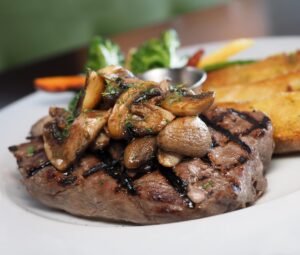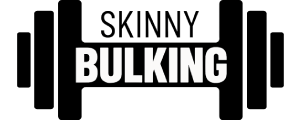Getting in shape and building muscle while also losing fat can be a challenging journey that requires hard work, dedication, and discipline. Many people struggle to find the right balance between building muscle and losing fat, often relying on fad diets or extreme workout routines that can do more harm than good. However, the key to achieving a lean and toned physique is not a secret at all, but rather a combination of proper nutrition, regular exercise, and a healthy lifestyle. In this blog post, we will reveal the secret to building muscle and losing fat, providing you with the knowledge and tools necessary to achieve your fitness goals and maintain a healthy and active lifestyle. Whether you’re a beginner or an experienced fitness enthusiast, this guide will help you transform your body and achieve the lean, toned look you’ve always dreamed of.
1. Understanding the basics of muscle building and fat loss
In order to achieve a lean and toned physique, it’s important to understand the basics of muscle building and fat loss. These two processes may seem contradictory at first, but they actually work hand in hand to create the ideal body composition.
Muscle building requires progressive overload, which means gradually increasing the weight or resistance used during exercise in order to challenge the muscles and stimulate growth. This can be achieved through weight training, bodyweight exercises, or resistance bands. Protein intake is also crucial for muscle building, as it provides the necessary building blocks for muscle repair and growth.
On the other hand, fat loss requires a calorie deficit, which means burning more calories than you consume. This can be achieved through a combination of diet and exercise, with a focus on whole, nutrient-dense foods and regular cardio activity. It’s important to note that a calorie deficit should be achieved gradually and sustainably, as extreme calorie restriction can actually hinder fat loss and muscle building.
By understanding the basics of muscle building and fat loss, you can create a workout and nutrition plan that supports both processes and helps you achieve a lean and toned physique. Remember to prioritize consistency and patience, as results will not happen overnight but will be worth the effort in the long run.
2. The importance of nutrition for muscle and fat loss
When it comes to building muscle and losing fat, nutrition is often the most important factor. No matter how hard you train, if your diet is not optimal, you will not see the results you desire.
To build muscle, you need to consume enough protein to repair and grow your muscles. Aim for at least 1 gram of protein per pound of body weight per day. Good sources of protein include lean meats, fish, eggs, and plant-based protein such as beans and tofu.
In addition to protein, you also need to consume enough calories to fuel your workouts and support muscle growth. However, you also need to be in a calorie deficit to lose fat. This may seem contradictory, but it is possible to achieve both by eating the right types of foods and tracking your calorie intake.
Focus on eating nutrient-dense foods such as fruits, vegetables, whole grains, and healthy fats. Limit processed foods, sugary drinks, and alcohol.
It’s also important to stay hydrated by drinking plenty of water throughout the day. Aim for at least 8 cups of water per day, and more if you are sweating a lot during your workouts.
Remember, nutrition is not a one-size-fits-all approach. It’s important to listen to your body, track your progress, and adjust your diet as needed to achieve your goals.
3. The role of protein in building muscle

Image: pixabay
Protein is an essential macronutrient for building and repairing muscle tissue. When we exercise, we create microscopic tears in our muscle fibers. Our body then uses protein to repair and rebuild these damaged fibers, making them stronger and larger in the process.
Protein also plays a crucial role in weight loss because it helps to increase satiety and reduce hunger. By including protein in your meals and snacks, you’ll feel fuller for longer periods of time, which can prevent overeating and snacking on unhealthy foods.
But how much protein do you need? It depends on a variety of factors, including your weight, activity level, and goals. As a general guideline, aim for at least 1 gram of protein per pound of body weight. So if you weigh 150 pounds, aim for 150 grams of protein per day.
Good sources of protein include lean meats, poultry, fish, eggs, dairy products, legumes, and nuts. It’s also important to spread your protein intake throughout the day, rather than consuming most of it at one meal. This helps to optimize muscle protein synthesis and support muscle growth and repair.
Remember, while protein is important for building muscle, it’s not the only factor. Resistance training, adequate rest and recovery, and a well-rounded diet are all crucial components of a successful muscle-building and fat loss program.
4. The importance of carbohydrates for energy during workouts
Carbohydrates are the primary source of fuel for our bodies during exercise. When we exercise, our muscles use the stored glycogen (glucose stored in muscles and liver) as fuel. The glycogen is broken down into glucose, which is then used by the muscles to produce energy.
Without adequate carbohydrates, our bodies will break down muscle mass for energy, leading to a loss of lean muscle mass. This is why it’s essential to include carbohydrates in your diet if you want to build muscle and lose fat at the same time.
Carbohydrates can be found in many foods, including fruits, vegetables, grains, and dairy products. It’s recommended to consume carbohydrates before and after a workout to provide the necessary energy for the workout and to replenish the glycogen stores in the muscles.
However, it’s important to note that not all carbohydrates are created equal. Simple carbohydrates, like those found in sugary drinks and snacks, are quickly broken down by the body and can cause a spike in blood sugar levels. Complex carbohydrates, like those found in whole grains and vegetables, are broken down more slowly by the body and can provide a sustained release of energy.
In conclusion, carbohydrates are essential for providing the energy needed to fuel your workouts and build lean muscle mass. Make sure to include a variety of complex carbohydrates in your diet to maximize your results.
5. The role of healthy fats in building muscle and losing fat
While many people believe that fat is the enemy when it comes to building muscle and losing fat, the truth is that healthy fats play an important role in achieving a lean and toned physique.
Healthy fats such as monounsaturated and polyunsaturated fats are essential for hormone production and regulation, including testosterone, which plays a crucial role in muscle growth and fat loss.
In addition, consuming healthy fats can help reduce inflammation in the body, which can improve recovery time and reduce the risk of injury during exercise.
Some good sources of healthy fats include nuts, seeds, avocados, olive oil, and fatty fish like salmon or tuna. Including these foods in your diet can provide your body with the essential fats it needs to support your fitness goals.
It’s important to remember that while healthy fats are beneficial, they are also high in calories, so it’s important to consume them in moderation as part of a balanced diet alongside regular exercise in order to achieve a lean and toned look.
6. How to create a nutrition plan for muscle building and fat loss
Creating a nutrition plan is essential when it comes to building muscle and losing fat. Without a proper diet, it will be challenging to achieve your desired body goal. Here are some tips that you can follow when creating a nutrition plan:
1. Determine your caloric needs: The first step is to calculate how many calories your body needs in a day. This will depend on your age, gender, height, weight, and activity level. Once you have determined your caloric needs, you can then adjust your diet accordingly.
2. Increase your protein intake: Protein is the building block of muscle, and increasing your protein intake can help you build and repair muscle tissue. Aim for at least 1 gram of protein per pound of body weight.
3. Include complex carbohydrates: Complex carbohydrates are an excellent source of energy and help to fuel your workouts. Aim to include whole grains, fruits, and vegetables in your diet.
4. Cut down on processed foods: Processed foods are often high in calories, sugar, and unhealthy fats, which can hinder your progress in building muscle and losing fat.
5. Don’t forget healthy fats: Healthy fats, such as omega-3 fatty acids, play a vital role in muscle building and fat loss. Include foods such as fatty fish, nuts, and seeds in your diet.
6. Stay hydrated: Drinking enough water is essential for overall health and can aid with muscle building and fat loss. Aim for at least eight glasses of water per day.
Remember, building muscle and losing fat is not an overnight process, and a proper nutrition plan takes time and consistency. Stick to your plan and be patient, and you will see results.
7. The best exercises for building muscle and losing fat
When it comes to building muscle and losing fat, not all exercises are created equal. The most effective exercises for achieving a lean and toned look are those that work multiple muscle groups at once and burn a high number of calories.
One of the best exercises for building muscle and losing fat is the squat. Squats work your legs, glutes, and core, and also help to increase your heart rate, which burns a lot of calories.
Another great exercise for building muscle and burning fat is the deadlift. Deadlifts work your legs, back, and core, and also burn a high number of calories due to the large number of muscles involved.
Push-ups are also an excellent exercise for building muscle and losing fat. They work your chest, shoulders, triceps, and core, and can be modified to make them easier or harder depending on your fitness level.
Finally, high-intensity interval training (HIIT) is a great way to build muscle and lose fat. HIIT involves short bursts of intense exercise followed by periods of rest, and has been shown to be highly effective at burning calories and building muscle.
Incorporating these exercises into your workout routine can help you achieve a lean and toned look by building muscle and burning fat at the same time. However, it’s important to remember that exercise alone is not enough – a healthy diet and consistent exercise routine are also necessary for achieving your fitness goals.
8. How to create a workout plan for muscle building and fat loss
Creating a workout plan that focuses on both muscle building and fat loss can be challenging, but it’s definitely achievable. It’s important to remember that building muscle and losing fat require different types of workouts, so creating a plan that balances both is key.
First, you want to make sure you’re incorporating compound exercises into your routine. These are exercises that work multiple muscle groups at once, such as squats, deadlifts, and bench presses. Compound exercises are great for building muscle and boosting your metabolism, which in turn will help with fat loss.
In addition to compound exercises, you’ll want to include some high-intensity interval training (HIIT) in your routine. HIIT involves short bursts of intense exercise followed by periods of rest. This type of workout has been shown to be effective for burning fat and increasing muscle mass.
Another important aspect of your workout plan should be progressive overload. This means gradually increasing the weight or intensity of your workouts over time. This will help you continue to challenge your muscles and see progress in both muscle building and fat loss.
Finally, it’s important to make sure you’re giving your muscles time to recover between workouts. This means taking rest days and incorporating stretching and foam rolling into your routine to help prevent injury.
Creating a workout plan that balances muscle building and fat loss may take some trial and error, but with consistency and dedication, you can achieve the lean and toned look you’re after.
9. The importance of recovery and rest for muscle building and fat loss
Many people think that building muscle and losing fat is all about working out and eating right. While these things are certainly important, many people overlook the importance of recovery and rest.
When you work out, you are essentially breaking down your muscles. In order to build muscle, your body needs time to repair and rebuild those muscles. This is where recovery comes in. If you don’t give your body enough time to recover, you will not build muscle as effectively.
Furthermore, rest is important for fat loss as well. When you don’t get enough sleep, your body produces more cortisol, which is a stress hormone that can actually lead to fat gain. Additionally, lack of sleep can lead to poor food choices and decreased motivation to exercise.
So, how can you make sure you are getting enough recovery and rest? First of all, make sure you are taking rest days from your workouts. This means taking a day off from exercise or doing some light stretching or yoga instead of your regular routine.
Additionally, aim for 7-9 hours of sleep per night. This can be difficult for some people, but making sleep a priority can have a huge impact on your muscle building and fat loss goals.
Finally, don’t underestimate the power of things like foam rolling, massages, and stretching for recovery. These activities can help increase blood flow, decrease soreness, and improve flexibility, all of which can help you make progress towards your goals.
10. Tips for staying motivated and consistent in your muscle building and fat loss journey

Image: pexels
Staying motivated and consistent in your muscle building and fat loss journey can be challenging, but it’s crucial to achieving your goals. Here are some tips to help you stay on track:
1. Set realistic goals: Set achievable goals that are specific and measurable. Having clear goals will give you something to work towards and help you stay motivated.
2. Track your progress: Keep track of your progress by taking measurements, progress pictures, or keeping a workout journal. Seeing progress, no matter how small, can be motivating and help you stay on track.
3. Find a workout buddy: Having a workout partner can make your workouts more enjoyable and keep you accountable. You can motivate each other and push each other to reach your goals.
4. Mix up your workouts: Doing the same workouts over and over can become boring and lead to a plateau in progress. Mix up your workouts by trying new exercises or adding more weight or reps to your current routine.
5. Reward yourself: Set up a reward system for yourself. When you reach a certain milestone or goal, treat yourself to something you enjoy, like a new outfit or a massage.
6. Be patient: Building muscle and losing fat takes time, so be patient with yourself. Don’t get discouraged if you don’t see progress right away.
By following these tips, you’ll be able to stay motivated and consistent on your muscle building and fat loss journey, and ultimately achieve the lean and toned look you desire.







Leave a Reply